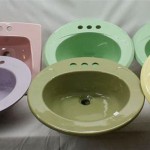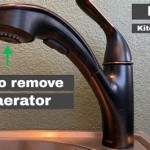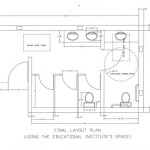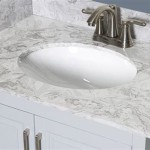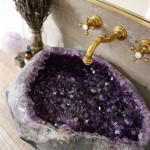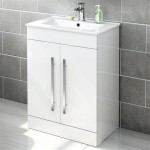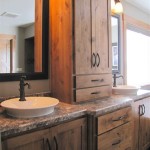The Ultimate Guide to Budgeting for a Basement Bathroom with Shower
Adding a bathroom to your basement can significantly enhance the value and functionality of your home. However, before embarking on this project, it's crucial to understand the potential costs involved. Here's a comprehensive breakdown of the essential aspects to consider:
1. Permits and Inspections
Before starting any work, ensure you obtain the necessary permits from your local building department. The fees vary depending on the municipality and the scope of the project. Additionally, factor in the cost of inspections throughout the construction process.
2. Plumbing
Installing plumbing is a major expense in a basement bathroom. The cost includes running water and drain lines, installing fixtures (sink, toilet, shower), and connecting to the existing sewer system. The complexity of the layout and the distance from existing pipes will impact the overall cost.
3. Electrical
Electrical work is essential to provide lighting, outlets, and exhaust fans in the bathroom. The cost depends on the number of fixtures, the distance from the electrical panel, and the need for additional wiring. Consider installing energy-efficient fixtures to minimize ongoing electricity expenses.
4. Framing and Drywall
Creating walls, ceilings, and openings for the shower and door requires framing and drywall work. The size of the bathroom and the materials used will determine the cost. Consider using moisture-resistant drywall for increased durability in a basement setting.
5. Shower Enclosure
The type of shower enclosure you choose will significantly impact the budget. Prefabricated shower stalls are typically more affordable than custom-built ones. Factors to consider include the size, style, and materials used (e.g., acrylic, tile, or glass).
6. Tile and Flooring
The cost of tiling the bathroom and installing flooring depends on the materials selected. Ceramic or porcelain tiles are popular options, but natural stone or luxury vinyl flooring can be more expensive. Consider using heated flooring for added comfort, especially in colder climates.
7. Vanity and Mirror
The vanity and mirror serve as focal points in the bathroom. The cost varies based on size, style, and functionality. Choose durable materials that complement the overall design of the bathroom.
8. Hardware and Fixtures
Hardware and fixtures, such as towel bars, faucets, and lighting, can add up quickly. Opt for quality products that match the aesthetic of the bathroom and provide long-term functionality.
9. Labor Costs
The cost of labor is a significant factor in any bathroom renovation. The complexity of the project, the location of the basement, and the availability of skilled tradespeople will influence the overall cost. Be sure to get multiple quotes before hiring a contractor.
10. Contingencies
Unforeseen circumstances can arise during any construction project. Set aside a contingency fund of 10-15% of the total budget to cover unexpected expenses or changes to the original plan.
Conclusion
The cost of adding a shower bathroom to your basement can vary greatly depending on the factors discussed above. By carefully considering each aspect and obtaining quotes from reputable contractors, you can develop a realistic budget and ensure that your basement bathroom project is a success.

Cost To Add A Basement Bathroom Bright Green Door

Cost To Add A Basement Bathroom Bright Green Door

How Much Does It Cost To Add A Bathroom In The Basement

How Much Does It Cost To Add A Bathroom 2024 Data

Cost To Add A Bathroom 2024 Guide Forbes Home

Basement Bathroom Cost These 5 Items Will Determine Your

Cost To Add A Basement Bathroom Bright Green Door

Adding A Bathroom To Basement Pros Cons Costs

Cost To Add A Basement Bathroom Bright Green Door

How To Install A Basement Bathroom 2024 Quick Guide
Related Posts
